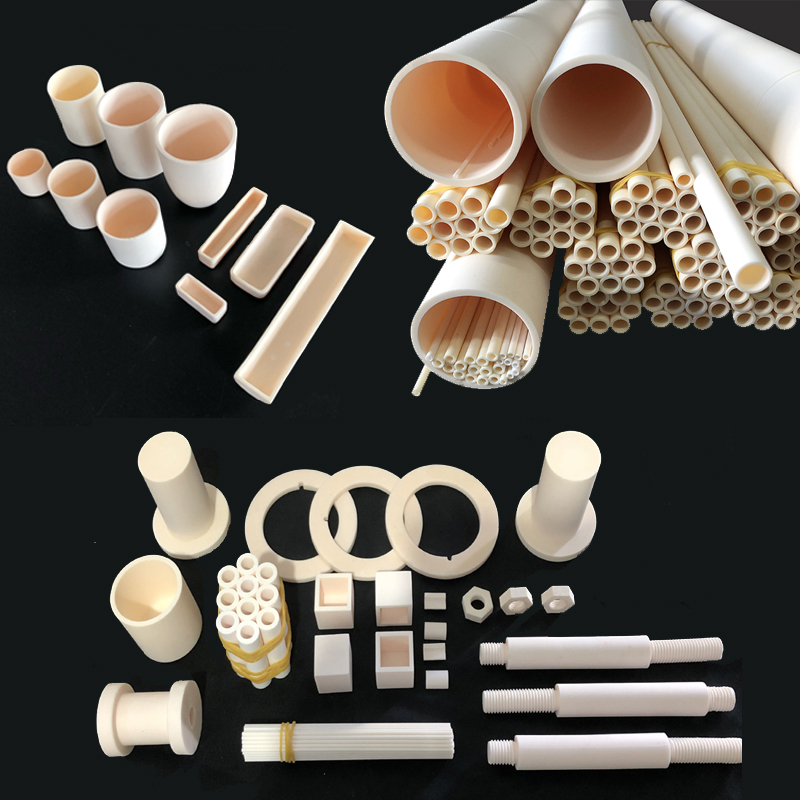Owing to its outstanding mechanical strength, excellent electrical insulation properties, good high-temperature resistance, and corrosion resistance, alumina ceramics occupy an irreplaceable and crucial position in modern industry. This paper conducts an in-depth analysis of the "main raw material" that determines the performance of alumina ceramics—industrial alumina, covering its classification, characteristics, and preparation processes. Starting from the application pain points in high-end manufacturing and combining specific application scenarios, it reveals the key impacts of raw material purity, particle size, and process performance on the final product performance. Additionally, it systematically elaborates on a series of solutions, ranging from raw material purification and microstructural regulation to advanced sintering technologies, and presents a summary and outlook on the future development trends of alumina ceramic raw materials.

Alumina ceramics; Main raw materials; Industrial alumina; Purity; Particle size; Sintering additives; performance regulation
Accurately editing ceramic 'genes' from raw materials to structure
To systematically address the aforementioned issues, we must return to the fundamentals of raw materials. Through multi-dimensional and refined control methods, we can achieve a "genetic-level" remodeling of the properties of alumina ceramics.
1. Selection and grading of raw materials: building the foundation of performance
Industrial alumina (Al ₂ O3) is not a single substance, but a family strictly graded according to purity:
● General-purpose type (e.g., 95%, 99% Al₂O₃): Suitable for scenarios with low performance requirements, such as refractory materials and general structural components.
● High purity type (such as 99.5%, 99.7% Al ₂ O3): with extremely low alkali metal impurity content, it is the core raw material for manufacturing high-performance electronic ceramics, transparent ceramics, and spark plugs.
● Ultra-high purity type (99.9% and above): Mainly used in fields such as semiconductors, lasers, and high-end optics, with purity requirements reaching the ppm or even ppb leve.
Based on the performance requirements of terminal products, accurately match the purity level of raw materials, and eliminate performance risks caused by impurities from the source.
2. Precise control of particle size and morphology: shaping ideal microstructures
The particle size, distribution, and morphology of the raw materials directly determine the sintering activity and the microstructure of the final ceramic:
● Ultrafine Particle Size and Narrow Distribution: Through advanced grinding and classification technologies such as jet milling and sand milling, alumina powder is processed to the submicron or even nanometer level, with its particle size distribution strictly controlled. Ultrafine and uniform particles have a larger specific surface area and higher sintering driving force, which facilitates the achievement of low-temperature and high-density sintering, and enables the production of high-performance ceramics with fine grains and a uniform structure.
● Spheroidization treatment: Near spherical particles have better filling and flowability, which not only improves the uniformity of dry pressed green bodies, but also promotes material transfer and densification processes during sintering.
3. Scientific compounding of sintering additives: guiding the "smart navigation" of sintering
To reduce the sintering temperature, inhibit the abnormal growth of grains, purify grain boundaries, or endow specific functions, a small amount (0.5%–5%) of sintering aids is usually introduced:
● MgO: a classic additive that effectively inhibits the abnormal growth of alumina grains and promotes the homogenization of microstructure. It is the key to preparing high-strength and transparent ceramics.
● SiO ₂, CaO, MgO, etc.: By forming an instantaneous liquid phase, they greatly promote material migration and achieve low-temperature high densification, but attention should be paid to the impact of liquid phase residue on high-temperature performance.
● Rare earth oxides (Y ₂ O3, La ₂ O3, etc.): can "pin" grain boundaries, remove grain boundary impurities, significantly improve the high-temperature creep resistance and long-term service reliability of ceramics.
4. Collaborative optimization of molding and sintering processes
Even if the raw materials are perfect, advanced molding and sintering processes need to be matched to fully unleash their potential:
● Isostatic Pressure Forming: Provides isotropic forming pressure to obtain high-density, defect free ceramic bodies.
● Hot pressing sintering and hot isostatic pressing sintering: Under the synergistic effect of temperature and pressure, the internal pores of the material are almost completely eliminated, and alumina ceramic products with a density exceeding 99.99% and performance approaching the theoretical limit are prepared.

